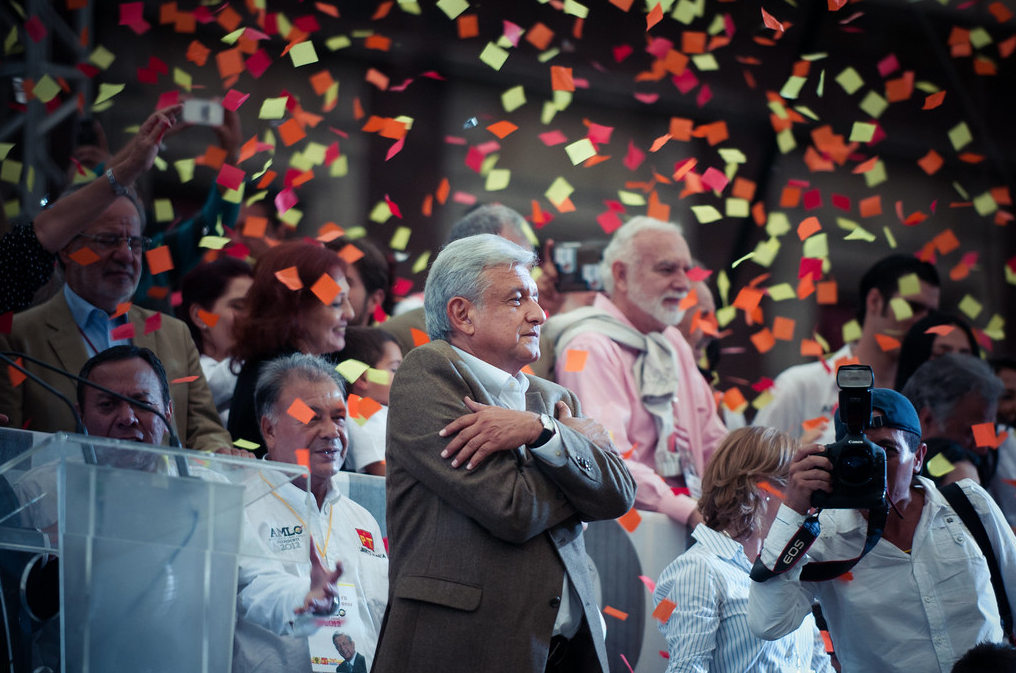On December 1, Andres Manuel Lopez Obrador will be halfway through his three-year term as President of Mexico. He is the most voted president in Mexico’s democratic era, with 53% of the vote. The last president who had come in with an overwhelming percentage of votes was Miguel de la Madrid, in 1982, with more than 70% of the votes, but Mexico was still living under the authoritarianism of the Institutional Revolutionary Party (PRI).
The Mexican political system changed in 1997. Since then, there had not been a unified government like the one achieved by López Obrador in 2018. The previous governments: Ernesto Zedillo (between 1997-2000), Vicente Fox (2000-2006), Felipe Calderón (2006-2012) and Enrique Peña (2012 and 2018) were divided and juxtaposed. The president’s party did not control the federal legislative branch nor did it have a significant majority of governorships in the states.
In those years, Mexico lived a democratically intense era, with a party system of moderate pluralism with three relevant political forces, PRI, PAN and PRD. The president had to negotiate with party leaders; and on the other hand, governors and municipal presidents organized themselves to counterbalance the centralizing presidentialism and favor federalism. In order to extend the control of power horizontally, autonomous constitutional bodies headed by experts on specific matters were created.
An inefficient democracy
But this democracy was not efficient in relation to the intensity of the demands and historical lags. According to the 2017 National Survey of Government Quality and Impact, the most pressing problems for the Mexican population were insecurity, crime, poverty and inequality, followed by corruption.
López Obrador knew how to read the moment well, he noticed the discontent with the political class, and focused his campaign on the fight against corruption as the country’s main problem. In the 2018 elections, the party system collapsed, the PRI came in third place, and MORENA, the party he created only in 2012, won in practically all the states, in addition to obtaining an important majority in the legislative branch together with its allies.
The opposition as a whole was left with little capacity to operate, which generated disbandments towards the president’s party. Once in power, AMLOcreated a narrative aroundthe”Fourth Transformation”(4T), a slogan to identify his government, which added to a strategy of permanent polarization, has succeeded in making a large part of the population believe that he is establishing a new regime. In the mid-term elections of 2021 MORENA won eleven of the fifteen governorships in dispute, again the majority in the legislature -with its allies-, and obtained significant majorities in the sub-national legislatures.
López Obrador at a crossroads
But legitimacy is lost or increased based on efficiency and effectiveness. And there the numbers do not favor López Obrador. From 2018 to 2020, according to data from the National Council for the Evaluation of Social Policy, the number of poor people increased from 41.9% to 43.9%, the OECD reported that the middle class went from 53.5 million people in 2018 to 47.2 in 2020. And while the government has pointed out that these are consequences of COVID-19, it is also true that Mexico is one of the countries with the worst indicators regarding the management of the pandemic worldwide.
In terms of corruption, the government’s main banner, according to the World Justice Project, Mexico fell fourteen places, ranking 121st out of 126 countries. Its social policy has focused on increasing resources to grant them as scholarships, support, credits, among other instruments, but its design suffers from serious institutional and operational shortcomings, and have become more than anything else instruments of electoral patronage.
During his government, public security was formally militarized by creating the National Guard with elements of the Armed Forces, who were also left in charge of various civilian tasks such as the construction of a new airport, a refinery, a train line, the management of the recently created Welfare Bank, the operation of customs and migration control, among others. This strategy is dangerous because it politicizes the Armed Forces and encourages opacity in management.
In the remainder of his governmental term, López Obrador will face many challenges. He has revived some practices of the Mexican presidential system that had faded away, such as the cult of personality, decisional centralism, pharaonic works, a social policy based on direct allocations and handouts, among others. But the Mexican political system maintains very rigid unwritten rules that no politically strong president has managed to modify.
AMLO knows the system very well, but he has fallen into the same temptation as some of his predecessors. In Mexico, presidential reelection does not exist constitutionally and is politically unthinkable. In July 2021 López Obrador and his party introduced the figure of “revocation of mandate” in the constitution, and have distorted the spirit of the letter, trying to make it be seen as a “ratification of mandate”. This has raised the idea of a possible attempt to modify his constitutional term.
Another reading has to do with his own political position within his movement. After the third year, presidents in Mexico begin to lose power, and the actors around them begin to move strategically thinking about their political future. That is why Lopez Obrador has surrounded himself with a cabinet that is on average over 65 years old, and most of them are about to retire. Only his chancellor, Marcelo Ebrad, and the current head of government of Mexico City, Claudia Sheinbaum, very close to his political project, have positioned themselves as natural successors. But he literally controls them.
Activating the “revocation of the mandate” translated as “ratification”, can curb the ambitions of his collaborators with the idea: “I command until the end”. However, López Obrador needs a strong party, but MORENA has very low institutionalization, it is a coalition of pragmatic political positions and a mixture of even contradictory ideologies, so it can hardly be classified as a leftist party, but it rises because its cohesion is based on loyalty to the leader.
In the coming months, it is very likely that López Obrador will resort to broad mobilizations and deepen his strategy of polarization to keep alive the project that brought him to the presidency. But this, in turn, will be a sign that his power is fading, like that of all the strong presidents who have governed Mexico.
*Translation from Spanish by David Castells













